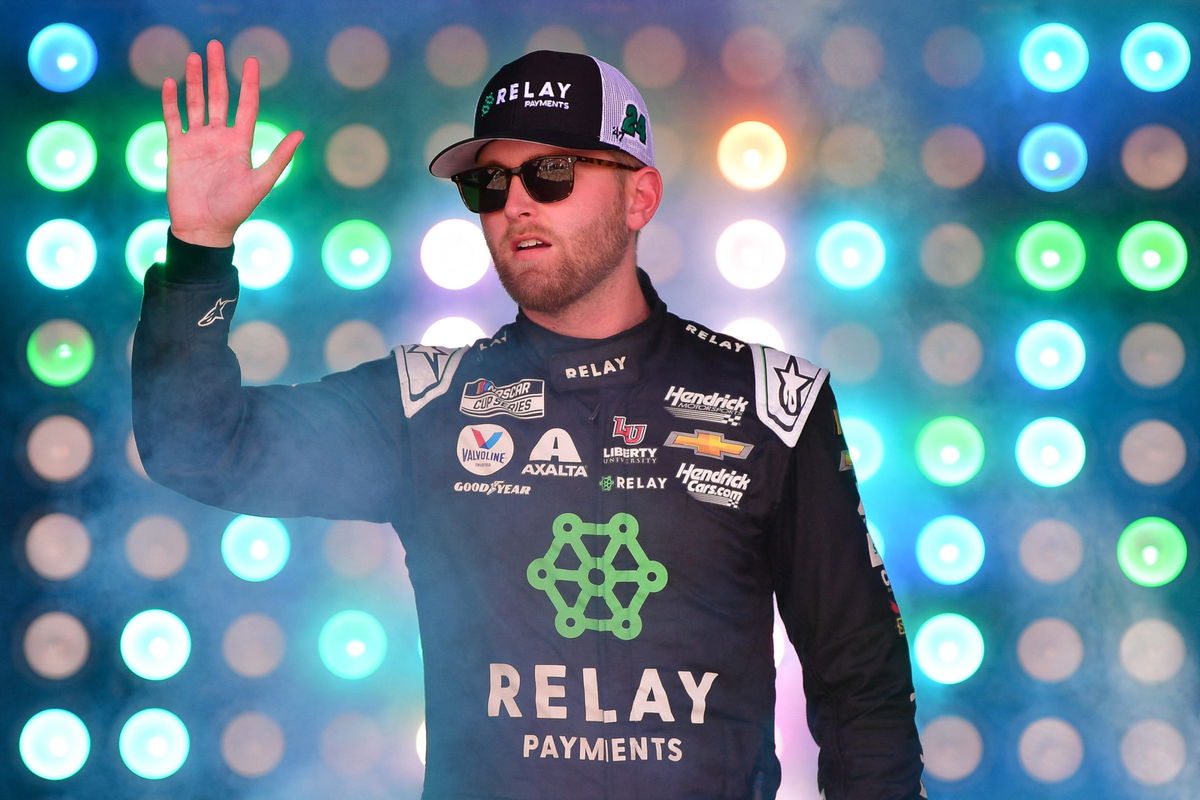
USA Today via Reuters
Oct 15, 2023; Las Vegas, Nevada, USA; NASCAR Cup Series driver William Byron (24) is introduced before the South Point 400 at Las Vegas Motor Speedway. Mandatory Credit: Gary A. Vasquez-USA TODAY Sports

USA Today via Reuters
Oct 15, 2023; Las Vegas, Nevada, USA; NASCAR Cup Series driver William Byron (24) is introduced before the South Point 400 at Las Vegas Motor Speedway. Mandatory Credit: Gary A. Vasquez-USA TODAY Sports
“I didn’t even realize where William was because so much was happening, and when those two started crashing, I saw this red blur go through, and I was like, did he get through?” These were the words of Jeff Gordon, as he re-lived William Byron’s stunning triumph in the 2025 Daytona 500. The race, filled with the usual Daytona chaos and late-race drama, saw Byron emerge victorious in an unforeseen sequence of events. While the NASCAR world was left in awe of his ability to navigate the wreck and claim victory, some fans quickly turned their attention to a different storyline – the long-standing suspicion that teams intentionally damage their cars after a race to make post-race inspection more challenging. And with Byron’s contact with the wall during his victory burnout, the conspiracy theories took off.
Watch What’s Trending Now!
The suggestion that Byron’s team, Hendrick Motorsports, deliberately used the old ‘crash-the-wall’ tactic to escape a possible rule violation quickly gained traction, leading to a wave of speculation. However, Byron himself has now hit back at these allegations, shutting them down with just three simple words.
ADVERTISEMENT
William Byron’s rebuttal to conspiracy theories
The allegations surrounding Byron’s victory stem from an incident that took place in the same weekend in the NASCAR Craftsman Truck Series. Parker Kligerman, who initially won his race, was later disqualified when his truck failed post-race inspection due to a rear ride height infraction. NASCAR deemed the No. 95 Chevrolet Silverado too low on both sides, costing Kligerman the victory.
Given the history of HMS, William Byron’s light contact with the wall during his celebration raised a few eyebrows. However, the HSM driver has now directly addressed the conspiracy theories surrounding his Daytona 500 victory burnout, shutting them down with a straightforward response. “Yeah, I haven’t looked at any of it… conspiracies that I hit the wall on purpose on my burnout. I’m just really clumsy,” he stated, making it clear there was no intentional damage. Byron also emphasized that he had avoided social media speculation entirely, saying, “Honestly, no, I haven’t looked at any social media. I feel like that’s the best way to go about things sometimes.” Instead, he focused on celebrating with his team, adding, “You gotta enjoy every win, no matter how they happened.”
William Byron said he hasn’t looked much on the social media discussion about his Daytona 500 win. But says as far as hitting wall on his burnout, he was just being clumsy. @NASCARONFOX pic.twitter.com/P7ZcJXwkQf
— Bob Pockrass (@bobpockrass) February 18, 2025
ADVERTISEMENT
The conspiracy had mounted because it had immediately reminded fans of a long-standing practice in NASCAR – damaging a car during the victory burnout in a way that could potentially mask ride height violations. The most infamous case came in 2011 when crew chief Chad Knaus was recorded telling Jimmie Johnson to “crack the back of the car” before post-race inspection. Additionally, Landon Cassill has admitted in the past to deliberately damaging his car post-race to prevent NASCAR from catching a ride-height infraction.
ADVERTISEMENT
NASCAR’s inspection process for Byron’s car and potential loopholes
NASCAR’s post-race inspection is a crucial part of ensuring fair competition. After each race, the winning car, along with a few others chosen at random, goes through a rigorous teardown. Officials check various parameters, including ride height, aerodynamics, and engine legality, to make sure no team has violated the rulebook. If a car fails inspection, it can lead to penalties or even outright disqualification, as seen in Kligerman’s case.
Ride height is a key area of scrutiny. NASCAR sets strict minimum and maximum height limits because it directly affects aerodynamics and handling. A lower ride height increases downforce, improving cornering speeds and overall performance. However, cars must meet the legal threshold post-race. If a car’s suspension settles too low, it can lead to disqualification, which is why some teams allegedly use the burnout technique to bend the rules.
While NASCAR has refined its post-race inspection process, some loopholes still exist:
ADVERTISEMENT
- Body Damage Cover-ups – If a car’s ride height is too low, damaging a fender or quarter panel during a burnout could create just enough irregularity to make precise measurement difficult.
- Loose Parts Disguising Infractions – Certain loose parts, like a rear bumper cover, can detach during celebrations, making it harder for officials to verify car legality.
- Tire Pressure Manipulation – Teams have previously found ways to adjust tire pressures to alter ride height temporarily, though NASCAR has cracked down on this method.
- Intentional Contact in the Final Laps – Some teams have even orchestrated last-lap contact to cause slight damage that might impact inspection.
Despite these existing loopholes, NASCAR has continually adapted its inspection process to counteract such strategies. With advanced technology, laser scanning systems, and stricter post-race policies, it has become increasingly difficult to get away with rule-breaking.
ADVERTISEMENT
ADVERTISEMENT
ADVERTISEMENT

